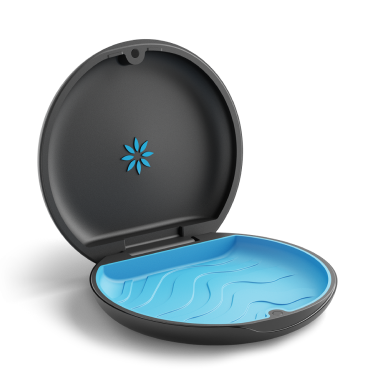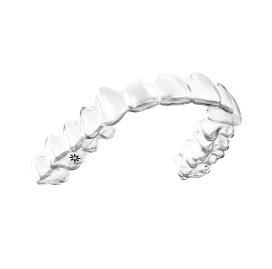
Transform your smile today!
What is Qualification of Doctor in Invisalign® Orthodontics?
Graduate, Faculte of Orthodontic Research and Continuing Education (by Dr Richard Litt)
Invisalign Certification Seminar, San Diego, California (Orthodontics without braces)
Long before Invisalign was introduced in Japan, Dr Enatsu was certified as Invisalign doctor by taking the Certification Seminar in San Diego, California. A solid foundation in Orthodontic Diagnosis and Treatment was learned from the Dr Litt, who was the Chairman of Postdoctoral Orthodontics at University of California, San Francisco. First from Asia.
One of the primary concerns people often have about dental braces is the aesthetic impact of the metalwork on their smile. Especially for adults, the prospect of wearing unattractive metal braces for long periods of time can be very discouraging. Invisalign® offers an almost invisible aligning system that straightens teeth fast and contains no metal.
Invisalign® treatment consists of a series of custom-made aligning trays. The dentist changes the trays every several weeks to fit the new tooth configuration. In addition to the reduced visual impact, Invisalign® aligning trays can be temporarily removed for important occasions – meaning that treatment duration is patient-controlled. A great number of people report complete satisfaction with both the Invisalign® treatment and the stunning results.
Invisalign® Information
1. What kind of bite problems can Invisalign® correct?
Invisalign® corrects the same dental problems as traditional metal braces; the only difference is that Invisalign® trays are almost invisible to the naked eye and can be removed at will.
Here are some problems that are commonly corrected with Invisalign®:
- Overcrowding – Too little space for the teeth to align normally, leading to tooth decay and gum disease.
- Large gaps between teeth – Can occur due to missing teeth or abnormal jaw growth.
- Crossbite – When upper teeth bite inside the lower teeth, causing uneven wear, bone erosion, and gum disease.
- Overbite – Upper teeth project further than the lower teeth, potentially causing jaw pain and TMJ.
- Underbite – Lower teeth project further than the upper teeth, potentially causing jaw pain and TMJ.
2. What advantages does Invisalign® offer over traditional braces and veneers?
Invisalign® trays are fully removable, requiring discipline and commitment. They are comfortable, nearly invisible, and achieve results similar to traditional braces.
Invisalign® is preferable to veneers in many cases because it straightens the teeth, whereas veneers are thin, permanent covers. Veneers require teeth etching, can break, and often last less than 20 years.
3. What does Invisalign® treatment involve?
The dentist devises an initial treatment plan and creates custom aligning trays. Three-dimensional digital images of the jaw allow for precise adjustments and predict changes to facial aesthetics.
Typically, 20-29 aligners are needed per arch, depending on the individual case.
4. What are some considerations when wearing Invisalign® trays?
The trays should be worn constantly, except when eating or drinking. Removing trays during meals prevents food from becoming trapped and causing decay.
New trays are usually needed every two weeks. Invisalign® is comfortable, effective, and provides visible progress over time.
Clinical Cases
-

Case 1: Japanese Female, 39 Years Old Treatment: 14 months
-

Case 2: British Male, 48 Years Old Treatment: 12 months
-

Case 3: Canadian Male, 45 Years Old Treatment: 9 months
-

Case 4: British Male, 39 Years Old Treatment: 8 months
Am I a candidate for Invisalign treatment?
Mild to Moderate Orthodontic Issues: If you have mild to moderate issues like crooked or spaced-out teeth, Invisalign can be a great solution. It can address alignment problems effectively without the need for traditional braces.
Desire for Discreet Treatment: If you want a more subtle way to straighten your teeth, Invisalign aligners are clear and virtually invisible, offering a more aesthetic treatment option compared to metal braces.
No Major Bite Problems: Invisalign is ideal for individuals without severe bite issues such as overbites, underbites, or crossbites. If your bite is generally aligned, Invisalign can work well for you.
Commitment to Wearing Aligners: Invisalign requires wearing the aligners for 20-22 hours a day. If you’re committed to following the treatment plan and wearing them consistently, you’re likely a good candidate.
Healthy Teeth and Gums: Before starting Invisalign, it’s important to have healthy teeth and gums. If your oral health is in good condition, you’ll likely be able to proceed with Invisalign treatment successfully.
Contact Us
If you are interested in coming to our clinic please fill out the form.







